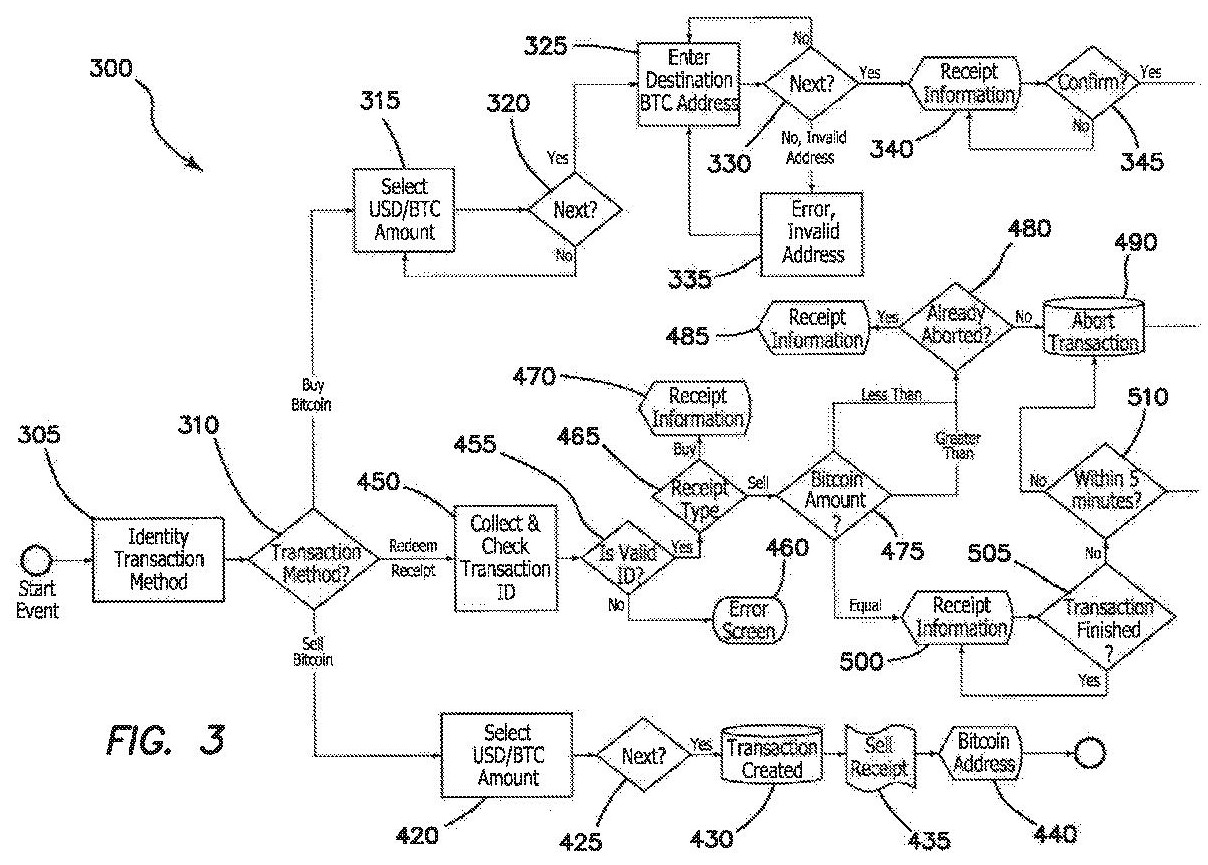Patent Pipeline: Bitcoin Has Spurred Digital Currency Technologies

Figure 3A from U.S. Patent No. 9,135,787 is a flow chart that illustrates the identify verification routine covered by the patent. Click image to expand.
Accessing Bitcoins from the blockchain
U.S. Patent No. 9,569,771 for a “Method and system for storage and retrieval of blockchain blocks using galois fields” addresses the storage and issuance of Bitcoins or other digital currency from a peer-to-peer communications network. This patent was published just last year, includes 20 claims, and comes from independent inventors Stephen and Zachary Lesavich.
To understand this patent, however, you need to first understand “blockchain” and “Galois fields.” In the world of digital currency, there are NO banks, no Federal Reserve System and no mint to print the actual money. For digital currencies, the blockchain is the closest thing to a bank, but it is nothing like a bank. For starters, it does not have a physical location and it is not static, but a continuously growing list of records called “blocks” that are linked together (that’s the “chain”) and kept secure via sophisticated cryptography. Each block contains a cryptographic hash or algorithm that links it to the previous block along with a timestamp for the transactions from that block. A proper blockchain is inherently resistant to any modification of the data in the blocks. A blockchain is an open, distributed ledger that records transactions between two parties very efficiently and in a verifiable and permanent way. To access the distributed ledger, a blockchain must be managed by a peer-to-peer network that adheres to a pre-defined protocol for the validation of new blocks in the blockchain. Once it is recorded, the data in a specific block cannot be altered after the fact without the altering all subsequent blocks. Since it operates in a peer-to-peer network, all blockchain transactions are fully accessible to the public. There are no private transactions in the world of digital currency, only full transparency.
A Galois field – in case you did not major in calculus – is a field (or universe) that contains a fixed number of finite numbers. Also called a “finite field,” it is the basis for all basic mathematical functions – addition, subtraction, multiplication and division. The integers in a finite field are designed as “mod p” when “p” is a prime number. Thoroughly confused? Good.
This patent provides additional security for digital currency transactions by establishing a routine under which one or more new blocks are created for a blockchain using a cloud application on a cloud server network that uses several processors. It securely stores new blocks in the blockchain in one or more cloud storage centers, and creates a modified Galois field GF(pn) that consists of lookup table in the modified Galois field that has unique field elements, as well as a second portion of the Galois field lookup table that includes virtual network address locations, actual network address locations, virtual protocol port address designations, and actual protocol port address designations that can be used with one or more processors on the cloud communications network.



















